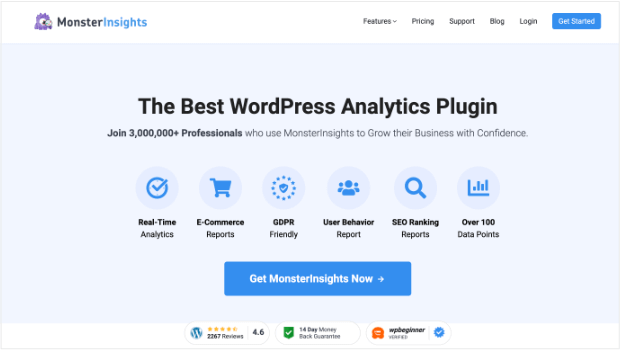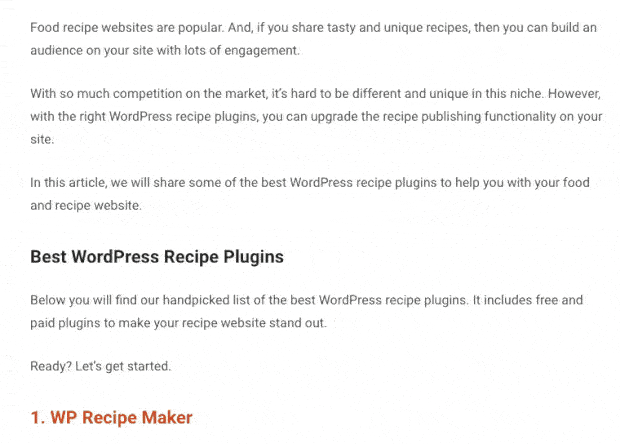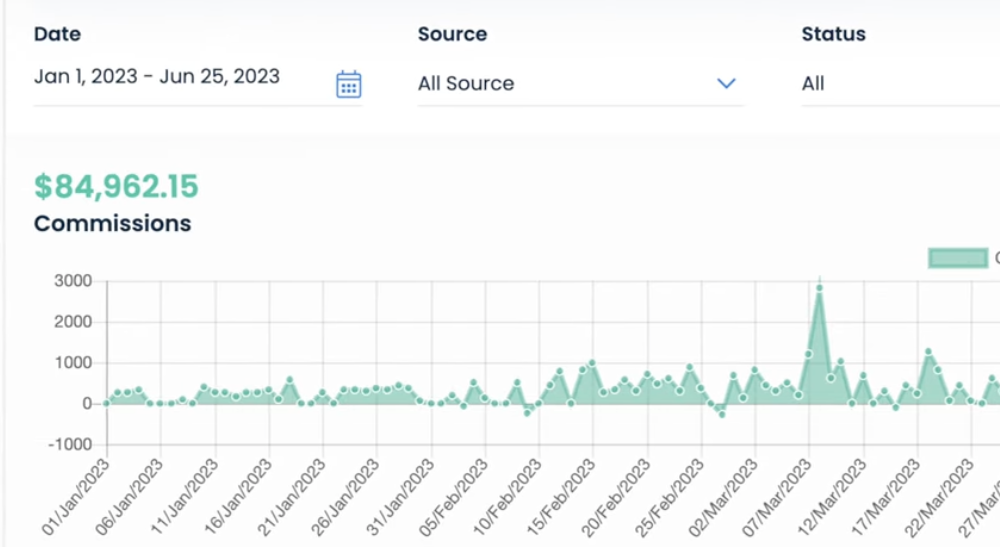Are you looking to make some extra money online? Look no further than the increasingly lucrative world of affiliate marketing. This strategy allows you to earn a commission by promoting other people’s products or services. With affiliate marketing spending on the rise, reaching a whopping $8.2 million in 2022, there has never been a better time to get involved. Whether you’re a beginner or an experienced marketer, there are various types of affiliate marketing that can suit your needs. By creating a website or blog in your niche and selecting affiliate products to promote, you can start earning money through pay per sale, pay per click, or revenue sharing models. It’s all about creating enticing content, optimizing existing traffic, and taking advantage of platforms like WordPress, social media, and email lists to maximize your revenue potential. So why wait? Dive into the world of affiliate marketing today and start earning those extra dollars.

This image is property of cdn.optinmonster.com.
The World of Affiliate Marketing
Affiliate marketing is a strategy where individuals earn a commission by promoting other people’s products or services. It has become a popular avenue for individuals looking to monetize their online platforms and leverage their influence. In this comprehensive article, we will explore various aspects of affiliate marketing, including its definition, growth, different types of affiliate marketers, getting started in the field, payment models, maximizing affiliate revenue, recommended tools and platforms, success stories, the future of affiliate marketing, ethical considerations and regulations, as well as the challenges faced by affiliate marketers. So let’s dive in and explore the fascinating world of affiliate marketing!
What is Affiliate Marketing?
Affiliate marketing is a performance-based marketing strategy where individuals, known as affiliate marketers, promote products or services through referral links and earn a commission for successful sales. These affiliate marketers act as intermediaries between the consumers and the product or service providers, leveraging their platforms and influence to drive traffic and generate sales. The core essence of affiliate marketing lies in the power of recommendation – when a consumer purchases a product or service through an affiliate marketer’s referral link, the affiliate marketer earns a commission as a reward for their marketing efforts.
The Growth of Affiliate Marketing
Affiliate marketing has experienced substantial growth in recent years, fueled by the rise of e-commerce and the increasing demand for digital marketing tactics. According to recent statistics, affiliate marketing spending has been steadily increasing and reached a staggering $8.2 billion in 2022. This growth can be attributed to various factors, such as the accessibility of online platforms, the proliferation of social media, and the evolving consumer behavior in the digital age. As the world becomes more interconnected and businesses seek innovative ways to reach their target audience, affiliate marketing has emerged as a powerful marketing strategy that benefits both the affiliates and the merchants.
Different Types of Affiliate Marketers
Within the realm of affiliate marketing, there are different types of affiliate marketers, each with their own approach and level of involvement. One common classification includes unattached, involved, and related affiliate marketers.
Unattached affiliate marketers are those who solely focus on generating revenue through affiliate marketing and often operate independently. They aim to drive traffic to their affiliate links and earn commissions without any direct connection to the product or service they promote.
Involved affiliate marketers are individuals who have personal experience or a direct relationship with the products or services they promote. This personal connection allows them to provide valuable insights and recommendations, enhancing their credibility as affiliate marketers.
Related affiliate marketers are those who already have an established platform or business within a specific niche. They leverage their existing audience and expertise to promote relevant products or services to their target market. These affiliate marketers often have a high level of trust with their audience, enabling them to effectively promote affiliate offers.
Understanding the different types of affiliate marketers can help you determine your own approach and align your strategies with your goals and strengths.
Getting Started in Affiliate Marketing
Now that you have a basic understanding of affiliate marketing, let’s explore how you can get started in this field and embark on your journey towards earning passive income through affiliate marketing.
Creating a Niche Website or Blog
One of the first steps in getting started as an affiliate marketer is to create a niche website or blog. This platform will serve as your online presence and showcase your expertise in a specific niche. Selecting a niche is crucial, as it allows you to target a specific audience and establish yourself as an authority in that particular area. When creating your niche website or blog, ensure that you provide valuable and engaging content that resonates with your target audience. This will not only attract visitors but also build trust and credibility, making them more likely to follow your recommendations and purchase the products or services you promote.
Choosing Affiliate Products
Once you have established your niche website or blog, it’s time to choose the affiliate products you want to promote. It is important to select products or services that align with your niche and cater to the needs and interests of your target audience. Conduct thorough research and consider factors such as product quality, commission rates, brand reputation, and affiliate program terms and conditions. By choosing affiliate products that you genuinely believe in and are relevant to your audience, you can provide authentic recommendations and increase the likelihood of driving conversions.
Building an Audience and Network
Building an audience and network is essential for success in affiliate marketing. Engage with your target audience through social media, forums, and other online communities related to your niche. provide value, answer questions, and establish yourself as a knowledgeable and trustworthy affiliate marketer. This will help you build a loyal following and expand your network, opening doors to potential collaborations, partnerships, and increased exposure for your affiliate marketing efforts.
Effective Content Creation
Content is king in affiliate marketing. Creating high-quality and engaging content is key to attracting and retaining your audience. Develop a content strategy that incorporates a mix of informative articles, product reviews, how-to guides, and other relevant content formats. Ensure that your content showcases the benefits and features of the affiliate products you promote, and include your affiliate links strategically. Focus on providing value to your audience and addressing their pain points, as this will not only increase engagement but also boost your chances of generating affiliate revenue.
Payment Models in Affiliate Marketing
As an affiliate marketer, understanding the different payment models in affiliate marketing is crucial, as it directly impacts your earnings and your approach to promoting affiliate products.
Pay per Sale (PPS)
Pay per Sale is one of the most common payment models in affiliate marketing. As the name suggests, affiliates earn a commission for each successful sale that occurs through their referral link. The commission rate is typically a percentage of the sale value and may vary depending on the affiliate program. Pay per Sale payment model incentivizes affiliates to focus on driving qualified traffic and maximizing conversions.
Pay per Click (PPC)
Pay per Click is another popular payment model in affiliate marketing. Affiliates earn a commission for each click their referral link generates. Unlike the Pay per Sale model, affiliates do not need to rely on actual purchases to earn commissions. This payment model is beneficial when promoting products or services that may have a lower conversion rate but generate high click-through rates.
Revenue Sharing
Revenue Sharing, also known as the cost per acquisition (CPA) model, involves affiliates earning a commission based on a predefined action, such as sign-ups, newsletter subscriptions, or free trials. Instead of focusing solely on sales, affiliates can earn commissions for driving valuable actions that align with the merchant’s goals. This payment model provides flexibility and allows for a wider range of affiliate marketing opportunities.
Maximizing Affiliate Revenue
While getting started in affiliate marketing is exciting, maximizing your affiliate revenue is the ultimate goal. Here are some strategies to boost your earnings and make the most out of your affiliate marketing efforts.
Creating Revenue-Generating Content
To generate affiliate revenue, it is crucial to create content that resonates with your target audience and encourages conversions. Develop content that highlights the benefits, features, and unique selling points of the affiliate products you promote. Incorporate persuasive language, storytelling techniques, and compelling visuals to captivate your audience’s attention and drive them towards taking action.
Promoting Affiliate Products
Promotion plays a vital role in maximizing affiliate revenue. While incorporating affiliate links within your content is essential, it is equally important to actively promote your affiliate products through various channels. Leverage social media platforms, email marketing, guest posting, and collaborations with other influencers or bloggers in your niche. Share your personal experiences, testimonials, and success stories related to the affiliate products to build trust and entice your audience to make a purchase.
Optimizing Existing Traffic
Optimizing your existing traffic can significantly impact your affiliate revenue. Analyze your website or blog metrics to identify the pages that attract the most visitors and engagement. Optimize these pages by strategically placing affiliate links and encouraging conversions. Additionally, leverage search engine optimization techniques to improve your website’s visibility and organic traffic. By capitalizing on your existing traffic, you can maximize your affiliate revenue without solely relying on generating new visitors.
Leveraging Email Lists
If you have built an email list, capitalize on it as a valuable asset for affiliate marketing. Craft compelling email campaigns that highlight exclusive offers, discounts, and limited-time promotions related to your affiliate products. Segment your email list based on user preferences and provide personalized recommendations to increase click-through rates and conversions. Email marketing allows for direct communication with your audience, making it an effective channel for promoting affiliate products and driving revenue.

This image is property of cdn.optinmonster.com.
Recommended Tools and Platforms
To excel in affiliate marketing, utilizing the right tools and platforms can greatly enhance your productivity and efficiency. Here are some recommended tools and platforms to help you streamline your affiliate marketing efforts.
WordPress for Affiliate Marketing
WordPress is a widely recognized and user-friendly platform for building websites and blogs. It offers a range of plugins, themes, and customization options that are specifically tailored for affiliate marketing purposes. With WordPress, you can easily create and manage your niche website or blog, optimize your content for search engines, and seamlessly integrate affiliate links into your website design.
Utilizing Social Media Platforms
Social media platforms such as Instagram, Facebook, Twitter, and YouTube have revolutionized the way individuals connect, consume content, and make purchasing decisions. Utilize these platforms to expand your reach, engage with your audience, and promote your affiliate products. Craft visually appealing and compelling content, leverage influencer partnerships, and explore paid advertising options to maximize your visibility and drive conversions.
Affiliate Networks and Programs
Affiliate networks and programs serve as intermediaries between affiliates and product or service providers. They offer a wide range of affiliate products, provide tracking and reporting tools, and ensure timely commission payments. Some popular affiliate networks and programs include Amazon Associates, ClickBank, ShareASale, and Commission Junction. Explore these platforms to find affiliate products that align with your niche and offer competitive commission rates.
Affiliate Marketing Success Stories
To gain inspiration and insights into the potential of affiliate marketing, let’s explore some success stories and case studies that highlight the power and effectiveness of this marketing strategy.
Case Study 1: From Side Hustle to Full-Time Income
In this success story, we follow the journey of John, an individual who started affiliate marketing as a side hustle but eventually turned it into a full-time income. John created a niche website focusing on outdoor gear and partnered with various affiliate programs to promote products such as camping equipment, hiking gear, and survival tools. By consistently creating valuable content, optimizing his website for search engines, and actively promoting his affiliate products through social media, John was able to attract a steady stream of traffic and generate substantial affiliate revenue. Eventually, John’s income from affiliate marketing surpassed his day job’s earnings, allowing him to transition into affiliate marketing as his full-time profession.
Case Study 2: How Social Media Influencers Boosted Revenue
This case study revolves around Emma, a social media influencer who leveraged her large following on Instagram to boost her affiliate revenue. Emma focused on the beauty and cosmetics niche and curated visually appealing and informative content showcasing various beauty products. By building trust and credibility with her audience, Emma’s recommendations resonated, leading to a significant increase in clicks and conversions. Emma partnered with beauty brands through affiliate programs and collaborated with fellow influencers, allowing her to expand her reach and attract new audiences. Through her strategic approach to affiliate marketing on Instagram, Emma successfully monetized her influence and achieved substantial financial success.
Case Study 3: Niche Website Success
This case study follows the story of Michael, an affiliate marketer who started a niche website in the pet care industry. Michael’s website provided comprehensive guides, product reviews, and training tips for pet owners. By focusing on a specific niche and providing valuable content, Michael was able to establish his website as a go-to resource for pet-related information. He partnered with affiliate programs that offered pet products, such as pet food, toys, and grooming accessories. Through targeted SEO strategies, email marketing, and regular content updates, Michael’s niche website gained recognition, attracting a loyal audience and driving significant affiliate revenue.

This image is property of cdn.optinmonster.com.
The Future of Affiliate Marketing
As we look towards the future, it is essential to anticipate the trends and innovations that will shape the landscape of affiliate marketing. Here are some trends and predictions for the future of affiliate marketing.
Trends and Predictions
- Increased Integration of AI and Automation: Artificial Intelligence (AI) and automation technologies are expected to play a vital role in affiliate marketing. These technologies will enable more personalized targeting, enhanced analytics and reporting, and automated campaign optimization.
- The Rise of Influencer Marketing: Influencer marketing, particularly within the realm of affiliate marketing, is projected to continue its upward trajectory. Influencers will play a crucial role in driving affiliate sales and engaging with audiences through authentic and genuine recommendations.
- Growth in Niche Affiliate Marketing: As the affiliate marketing industry becomes more saturated, affiliates will carve out their own niches and cater to specialized audiences. Niche affiliate marketing will offer opportunities to monetize unique interests and passions.
The Impact of AI and Automation
The integration of AI and automation technologies in affiliate marketing will revolutionize the way affiliates operate. AI algorithms will allow for more precise targeting, ensuring that affiliate offers are presented to the right audience at the right time. Automation tools will streamline various aspects of affiliate marketing, including campaign management, content creation, and performance tracking. This will enable affiliates to focus on higher-value tasks, such as strategy development and building relationships with their audience.
The Role of Influencers in Affiliate Marketing
Influencers will continue to play a significant role in shaping the affiliate marketing landscape. Their ability to connect with their audience, build trust, and spark engagement will make them valuable partners for brands and merchants. Influencers will drive affiliate sales by leveraging their authority and credibility to promote products or services effectively. The emphasis on authenticity and transparency will remain paramount, as consumers increasingly seek genuine recommendations from influencers they trust.
Ethical Considerations and Regulations
As affiliate marketing grows in popularity, it is essential to address the ethical considerations and regulations that govern this industry. Maintaining transparency, complying with guidelines, and avoiding unethical practices are crucial aspects of ethical affiliate marketing.
Transparency and Disclosures
Transparency is essential when it comes to affiliate marketing. It is important for affiliates to clearly disclose their relationship with the products or services they promote, ensuring that their audience is aware of their affiliate status. Transparency builds trust and ensures that consumers are making informed decisions.
Compliance with FTC Guidelines
Affiliate marketers in the United States must comply with the guidelines set forth by the Federal Trade Commission (FTC). These guidelines require affiliates to disclose their affiliate relationship and any material connections they have with the products or services they promote. Failure to comply with FTC guidelines can result in penalties or legal consequences.
Avoiding Unethical Practices
Affiliate marketers should strive to maintain ethical standards in their marketing efforts. This includes avoiding practices such as false or exaggerated claims, misleading reviews, or the promotion of unethical products or services. Upholding ethical practices not only safeguards the reputation of the affiliate marketer but also protects the interests of the consumers.

This image is property of cdn.optinmonster.com.
Challenges in Affiliate Marketing
While affiliate marketing presents numerous opportunities, it is not without its challenges. As an affiliate marketer, it is crucial to be aware of these challenges and develop strategies to overcome them.
Competition and Saturation
The growing popularity of affiliate marketing has led to increased competition and market saturation. Standing out among the vast sea of affiliate marketers can be challenging. To overcome this challenge, focus on carving out a unique niche, providing exceptional value to your audience, and cultivating strong relationships with your target audience.
Building Trust and Credibility
Building trust and credibility is vital in affiliate marketing. Consumers need to trust the recommendations and expertise of affiliate marketers before making a purchase. It is crucial to invest time and effort in building meaningful connections with your audience, consistently providing valuable content, and showcasing your knowledge and authenticity.
Managing Affiliate Relationships
Managing relationships with merchants, networks, and other affiliates can be a complex task. Communication, negotiation, and establishing mutually beneficial partnerships are key to navigating these relationships successfully. Stay organized, maintain open lines of communication, and be proactive in building and nurturing your affiliate relationships.
Conclusion
Affiliate marketing is an exciting and dynamic field that offers individuals the opportunity to earn passive income by promoting products or services they believe in. In this comprehensive article, we explored the various aspects of affiliate marketing, including its definition, growth, different types of affiliate marketers, getting started in the field, payment models, maximizing affiliate revenue, recommended tools and platforms, success stories, the future of affiliate marketing, ethical considerations and regulations, as well as the challenges faced by affiliate marketers. By understanding these key components and implementing effective strategies, you can embark on a successful journey in the world of affiliate marketing and unlock the potential for financial freedom and professional fulfillment.
Source: https://optinmonster.com/get-started-with-affiliate-marketing/




